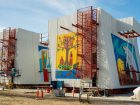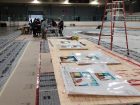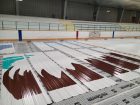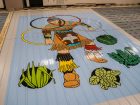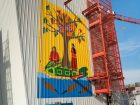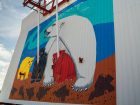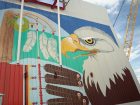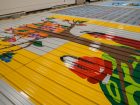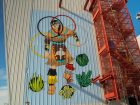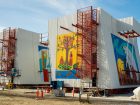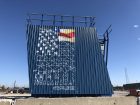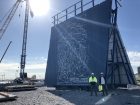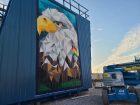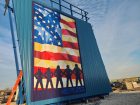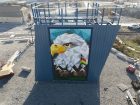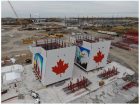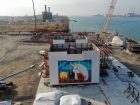
Features
Roads & Bridges
First Nation artists feature artwork on Gordie Howe International Bridge construction site
January 22, 2021 By Jay Koblun
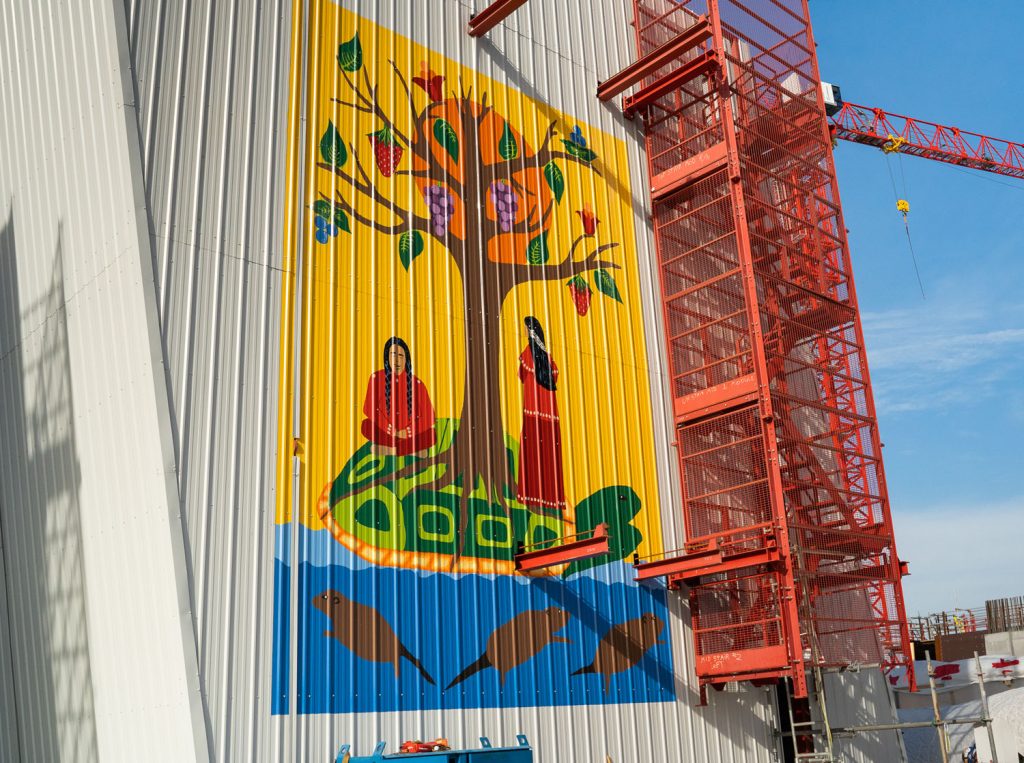 Photo by Gordie Howe International Bridge
Photo by Gordie Howe International Bridge Creating opportunities for local community members is one of the goals of the Workforce Development and Participation Strategy (WDPS) of the Gordie Howe International Bridge.
While most commonly thought of as jobs for construction and skilled trade workers, a special initiative gave local artists from Walpole Island First Nation, Caldwell First Nation and southwest Detroit the chance to contribute their talents to the Canadian and U.S. construction sites.
Part of the Community Benefits Plan includes a commitment to engage an Indigenous artist in Canada to create artwork for the construction site. There are six pieces on the Canadian side and dour art pieces on the U.S. side of varying sizes. The largest piece measures 15 metres by 12 metres.
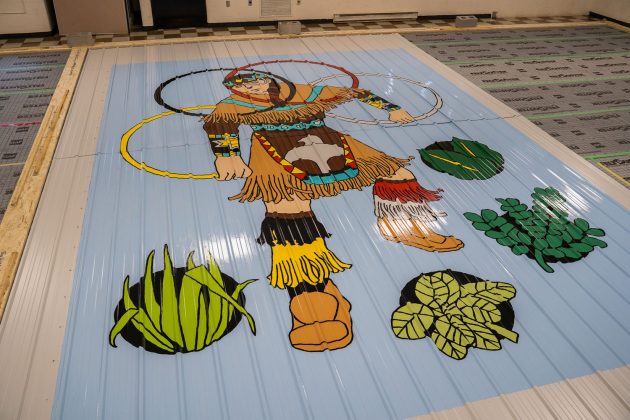
“This innovative opportunity for local artists to participate directly in the project, through a collaborative relationship with the project team and to reflect the character of the region is representative of WDBA’s goals behind the Community Benefits Plan,” said Bryce Phillips, CEO, Windsor-Detroit Bridge Authority (WDBA). “We celebrate the remarkable craftsmanship and contributions the region has to offer.”
When working to implement this commitment, Bridging North America recognized that the outside panels of the tower crane climbing system provided perfect canvasses for painting murals. With four climbing systems in place – two on each side of the bridge – this initiative was expanded to include a Southwest Detroit artist on the U.S. site.
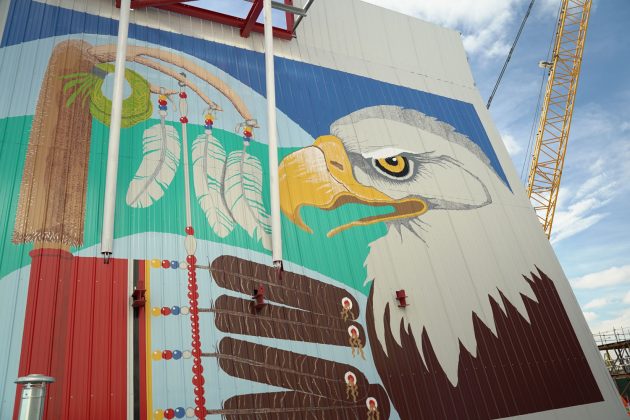
Paul White, Teresa Altiman and Daisy White from Walpole Island First Nation, Naomi Peters from Caldwell First Nation, and Roberto Villalobos from southwest Detroit are the artists who were asked to participate. They were approached in summer 2020 and began designing their paintings.
The art features the international aspect of the project with the Canadian maple leaf and the American stars and stripes. The artists were encouraged to make recommendations to the project team and to take creative liberties in the art to not only share the history of the lands on which the bridge is being constructed but also to tell a few of the many stories about the culture and diversity of the region.
“The tower crane panels are a perfect location for these on-site art pieces. While the construction site remains inaccessible to the public, the murals will be visible from land and water,” said Bridging North America CEO Aaron Epstein. “Our workers will also enjoy this impressive art which will serve as inspiration and a reminder of the unique communities we are a part of.”
The tower crane climbing systems on which the murals will be displayed are temporary steel structures used to provide access for workers constructing the two massive bridge towers supporting the bridge. Once the tower cranes reach their final height, they will more than double the height of Windsor’s tallest building and will be taller than the 73-story GM Renaissance Center in Detroit.
As the tower cranes are extended to their ultimate height of 250 metres, so will the artwork, making them visible from land on both sides of the border and from the Detroit River. The panels for the Canadian tower crane were painted at Walpole Island and transported to the bridge construction site in fall 2020 and the U.S. panels were painted on site. The murals will remain on the climbing systems for approximately two years before being repurposed once the bridge is complete.
The region’s culture and history will be reflected through other initiatives in the Gordie Howe International Bridge Community Benefits Plan including a series of plaques/interpretive signage. WDBA will engage local historians and residents through further consultation starting in 2021.
Print this page
